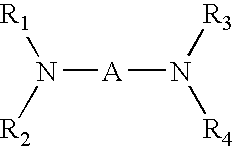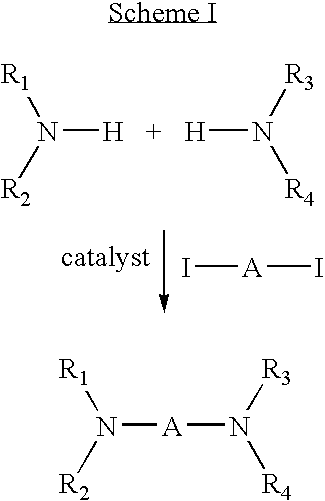Imaging members
a technology of electrophotography and imaging member, which is applied in the direction of corona discharge, instruments, cameras, etc., can solve the problems of increasing residual voltage, non-uniformity of images, and small molecule crystallization with increasing concentrations in the polymer binder, and achieves more expensive coating and cleaning procedures
- Summary
- Abstract
- Description
- Claims
- Application Information
AI Technical Summary
Benefits of technology
Problems solved by technology
Method used
Image
Examples
example ii
[0050] Three photoreceptors were prepared by forming coatings using conventional techniques on a substrate comprising vacuum deposited titanium layer on a polyethylene terephthalate film. The first coating was a siloxane barrier layer formed from hydrolyzed gamma-aminopropyltriethoxysilane having a thickness of 0.005 micrometers (50 Angstroms). The barrier layer coating composition was prepared by mixing 3-aminopropyltriethoxysilane (available from PCR Research Center Chemicals of Florida) with ethanol in a 1:50 volume ratio. The coating composition was applied by a multiple clearance film applicator to form a coating having a wet thickness of 0.5 millimeter. The coating was then allowed to dry for 5 minutes at room temperature, followed by curing for 10 minutes at 110 degrees Centigrade in a forced air oven. The second coating was an adhesive layer of polyester resin (49,000, available from E.I. duPont de Nemours & Co.) having a thickness of 0.005 micrometers (50 Angstroms). The se...
PUM
 Login to View More
Login to View More Abstract
Description
Claims
Application Information
 Login to View More
Login to View More - R&D
- Intellectual Property
- Life Sciences
- Materials
- Tech Scout
- Unparalleled Data Quality
- Higher Quality Content
- 60% Fewer Hallucinations
Browse by: Latest US Patents, China's latest patents, Technical Efficacy Thesaurus, Application Domain, Technology Topic, Popular Technical Reports.
© 2025 PatSnap. All rights reserved.Legal|Privacy policy|Modern Slavery Act Transparency Statement|Sitemap|About US| Contact US: help@patsnap.com



